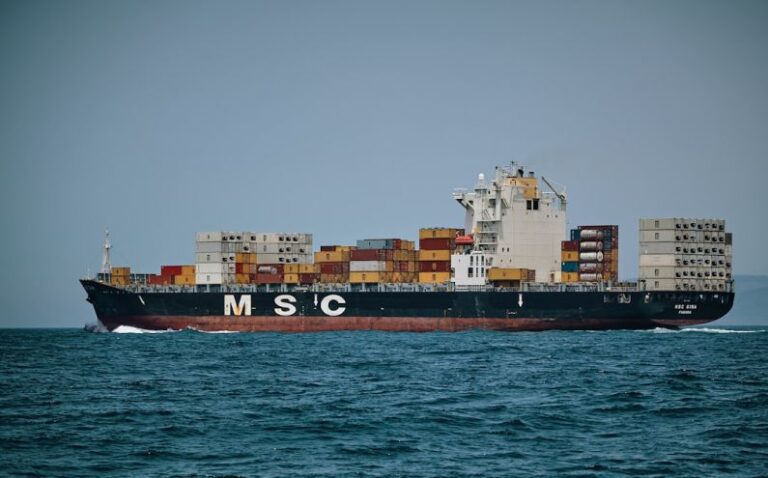Improving Your Last-mile Delivery Strategy
In the fast-paced world of e-commerce, the last-mile delivery is a crucial aspect of the supply chain that can make or break the customer experience. As online shopping continues to dominate consumer behavior, businesses are constantly seeking ways to optimize their delivery strategies to meet rising demands for convenience and speed. In this article, we will explore key tactics and innovative solutions to enhance your last-mile delivery strategy and stay ahead in the competitive retail landscape.
Understanding the Importance of Last-Mile Delivery
The last-mile delivery is the final leg of the delivery process, where packages are transported from a distribution center to the end consumer’s doorstep. While it may seem like a small part of the overall supply chain, it plays a significant role in shaping the overall customer experience. A seamless last-mile delivery ensures timely and secure delivery, leading to increased customer satisfaction and loyalty. On the other hand, delays, damaged goods, or missed deliveries can result in customer dissatisfaction and negative reviews.
Harnessing Technology for Efficiency
Technology has revolutionized the logistics industry, offering a myriad of tools and solutions to streamline last-mile delivery operations. Route optimization software helps delivery drivers plan the most efficient route, reducing fuel costs and minimizing delivery times. Real-time tracking systems allow customers to monitor the progress of their orders, providing transparency and peace of mind. Additionally, automation technologies such as drones and autonomous vehicles are being explored to further accelerate the delivery process.
Embracing Data Analytics for Insights
Data analytics play a crucial role in optimizing last-mile delivery operations. By analyzing historical delivery data, businesses can identify patterns and trends to forecast demand more accurately. This enables companies to allocate resources efficiently, such as adjusting staffing levels during peak periods or optimizing delivery routes based on traffic conditions. Moreover, data analytics can help businesses identify areas for improvement and implement targeted solutions to enhance the overall delivery experience.
Building Strong Partnerships with Logistics Providers
Collaborating with reliable logistics partners is essential for a successful last-mile delivery strategy. By working with experienced providers who have a strong network and infrastructure in place, businesses can ensure timely and cost-effective deliveries. Furthermore, partnering with local couriers or on-demand delivery services can help businesses reach customers in remote areas or offer same-day delivery options, catering to evolving customer expectations.
Prioritizing Customer Communication and Flexibility
Effective communication is key to a positive delivery experience. Providing customers with accurate delivery estimates and proactive updates on their order status helps manage expectations and reduces the likelihood of missed deliveries. Offering flexible delivery options, such as time slots or alternative delivery locations, allows customers to choose a delivery method that suits their schedule, enhancing convenience and satisfaction.
Enhancing Sustainability Practices
As environmental concerns become increasingly important, integrating sustainability practices into last-mile delivery operations can benefit both businesses and the planet. Implementing eco-friendly packaging materials, optimizing delivery routes to reduce carbon emissions, and exploring alternative transportation modes such as electric vehicles or bicycles can help businesses reduce their carbon footprint and appeal to eco-conscious consumers.
Adapting to Changing Consumer Preferences
Consumer preferences are constantly evolving, and businesses must stay agile to meet shifting demands. As the demand for same-day and next-day delivery grows, businesses must invest in infrastructure and technology to offer faster delivery options. Additionally, implementing contactless delivery methods and enhancing security measures can address concerns around safety and hygiene, especially in light of the COVID-19 pandemic.
Innovating for the Future of Last-Mile Delivery
The future of last-mile delivery is ripe with innovation, from drone deliveries to autonomous vehicles and even delivery robots. Embracing these emerging technologies can offer businesses a competitive edge and revolutionize the way goods are delivered to customers. By staying abreast of industry trends and continuously innovating their delivery strategies, businesses can adapt to changing consumer behavior and position themselves for long-term success in the e-commerce landscape.
With the right blend of technology, data analytics, strategic partnerships, and customer-centric practices, businesses can optimize their last-mile delivery strategy and deliver exceptional experiences to their customers. By prioritizing efficiency, transparency, sustainability, and innovation, businesses can stay ahead of the curve and meet the evolving demands of today’s consumers.






